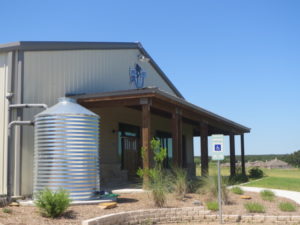With almost 15 inches of rain within the last 2 months we’ve definitely experienced a wetter than average spring, but summer is now in full swing throughout Texas and that could mean drier times ahead. With fresh groundwater in ever-increasing demand, a simple task homeowners and citizens can implement is rainwater harvesting. Participating in rainwater harvesting can;
• Offset lowering aquifer water levels
• Lower water utility bills and
• Reduce polluted runoff
The phrase may sound intimidating, but by incorporating some easy-to-use equipment around your home, you can collect precipitation that falls during those unpredictable Texas storms, and utilize it later. The financially advantageous incentives available through harvesting are two-fold. Apart from lower monthly water bills, the state of Texas allows for property tax exemptions for activities such as rainwater harvesting and some municipalities offer other incentives.
Texas Water Development Board Rainwater Harvesting Tips
Using rainwater for landscaping is also an excellent way to keep your plants green and growing. By reducing the rapid runoff for your roof, collections can reduce fertilizer and soil runoff, meaning your garden and landscaping will stay healthier longer. In many cases the use of rainwater is preferred for local plants because it is typically free of chemicals added to water from a centralized system as well as other salts and minerals which can be harmful to plants and could damage root systems. If you’re hoping to map out exactly how much water would be necessary for your household, below is a link to a handy calculator to help determine how much rainwater is harvestable based on your roof size. Simply enter the dimensions of your roof, as well as the amount of rainwater that has fallen, and voila! This volume of water can be applied to your garden, landscape or utilized for other purposes.
Rainwater Collection Calculator
Creating a rainwater harvesting system doesn’t have to be complicated. Something as simple as purchasing or building a rainwater barrel can be inexpensive, easy-to-use and can make an immediate difference with longstanding benefits. For someone that wants to make a more substantial investment, paired with ample storage, fairly simple filtration systems can provide potable water to be used inside your home. With this information, take the time to outfit your homestead, and help save water in North Texas!
Protecting the water supply is everyone’s responsibility. For more information about rainwater harvesting and other water saving ideas, please visit the Upper Trinity Groundwater Conservation District’s website (www.uppertrinitygcd.com) where you will find helpful links, videos, articles, and tools to help conserve water. Please contact our office at (817) 523-5200 and Jill Garcia, Education and PR Coordinator for more information.


